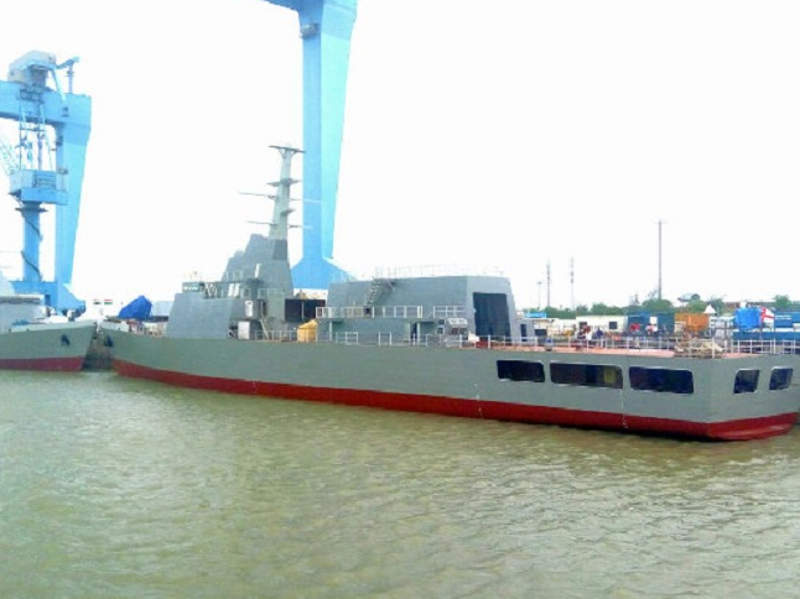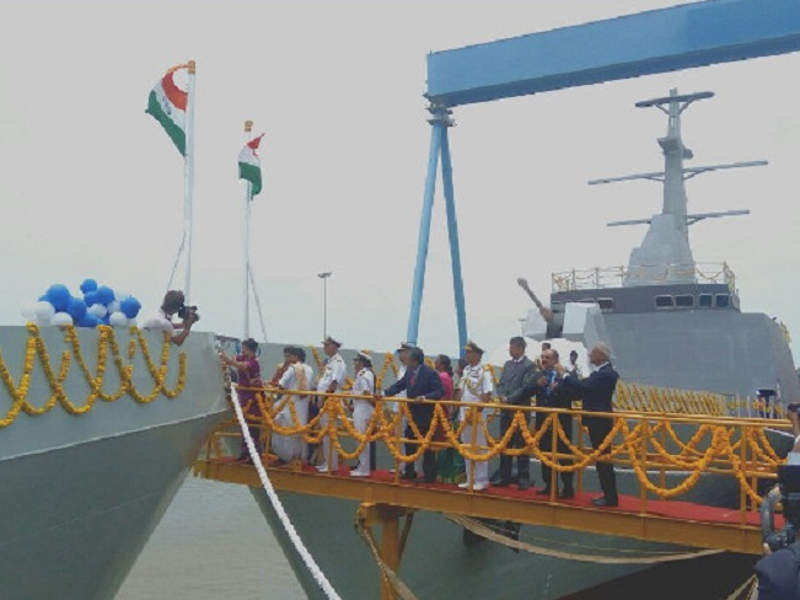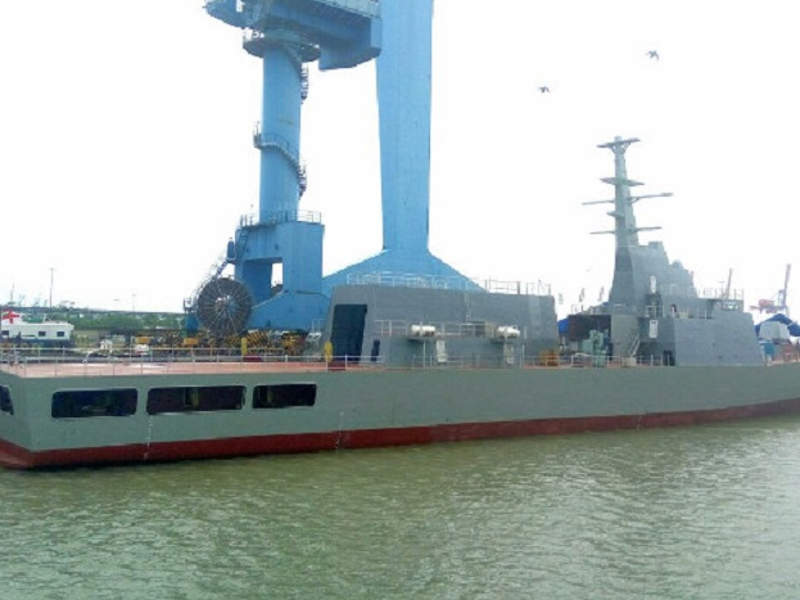The Project 21 (P-21) Naval Offshore Patrol Vessels (NOPVs) are built by Reliance Defence and Engineering Limited (RDEL) at its Pipavav shipyard. The vessels are intended to enhance the maritime surveillance and patrol capabilities of the Indian Navy.
RDEL received a contract worth approximately $550m from the Indian Ministry of Defence (MoD) to build five NOPVs for the Indian Navy in June 2010. The design of the NOPV was unveiled by the shipyard at the Defence Expo (DefExpo) India 2014.
The vessels are being built in two batches, one of two and one of three units. The first two NOPVs in the class, INS Shachi and INS Shruti, were launched in July 2017. The vessels are the first warships to be launched by a private sector shipyard in India.
INS Shachi is scheduled to be delivered by the end of 2017, while INS Shruti is expected to be commissioned in early-2018.
The second batch of three vessels is under construction at RDEL’s facility in Pipavav for delivery in 2018.
The NOPVs are mainly used for exclusive economic zone (EEZ) surveillance, anti-piracy patrol, fleet support operations, maritime and coastal security missions, and protection of shipping lanes.
Design and features of the Project 21 NOPVs
The vessel integrates a mono-hull design, with the hull made of marine grade steel, while the superstructure is constructed using aluminium alloys. The vessel is built according to the IRClass Rules for Indian Naval combatant ships.
Each NOPV will measure 110m long and will have a full load displacement of 2,000t. The operations will be controlled by an intelligent integrated platform management system (IPMS) interfaced with all shipboard systems.
Weapon systems and survivability
The NOPVs will be armed with a 76mm super rapid gun mount (SRGM) and two 30mm AK-630M close-in weapon systems (CIWS) to defend and offend against medium and short-range targets. The SRGM will feature an integral stealth shield to reduce the total radar cross-section signature of the ship.
The 76mm gun can fire at a rate of 120 rounds a minute and engage both aerial and surface targets, as well as incoming missiles. It will attain a maximum firing range of 16.3km with standard ammunition. The gun will be remotely controlled by an electronic fire control system.
The AK-630M CIWS can engage manned and unmanned aircraft, small-sized surface targets, soft-skinned coastal targets, and floating mines. It will offer a rate of fire of 4,500 rounds a minute.
The vessels will be equipped with a KAVACH chaff rocket launch system. The multi-barrel chaff rocket launcher will defend the ship against incoming anti-ship missiles.
Navigation and communications
The patrol vessels will feature an integrated bridge system and echo sounder, as well as X and S-band radars. The advanced crew communications suite will integrate VLF, MF, HF, VHF, UHF and satellite communication systems.
Aviation facilities on board the Indian Navy’s NOPV
The helicopter deck located on the stern of the NOPV will accommodate a single helicopter. The deck can support the operations of a 5t-class naval utility helicopter or a 12.5t multi-role helicopter.
Propulsion
The patrol vessels will be powered by two main diesel engines driving two controllable pitch propellers through twin shafts. Each engine provides a maximum power output of 18,200kW. The vessels will also integrate a fin stabiliser to reduce the rolling motions of the hull.
The propulsion system will provide a maximum speed of 25k and maximum range of approximately 11,000km at an economical speed of 16k.






